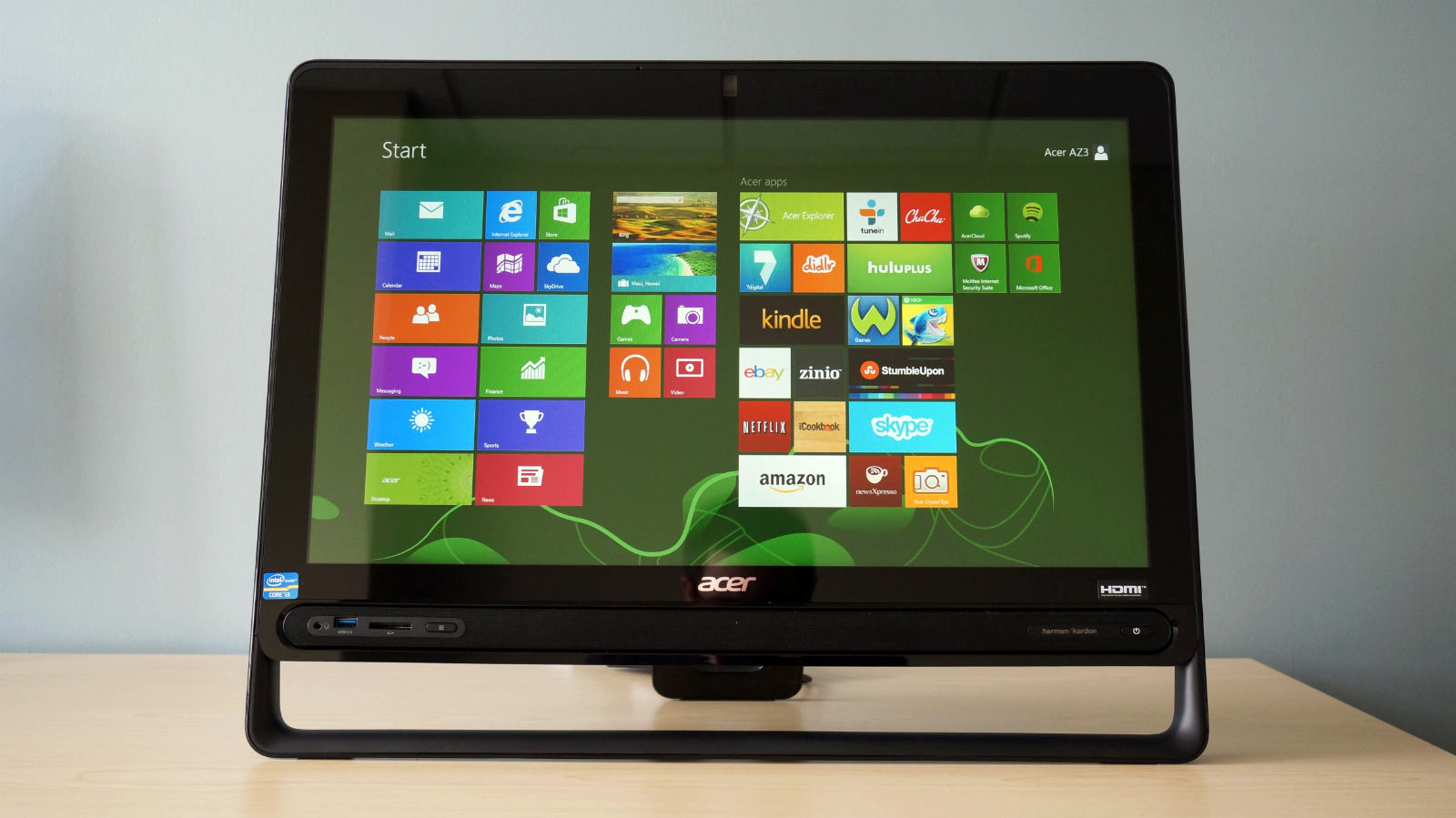Why you can trust TechRadar
The Z3 is designed for light everyday use and entertainment, but the all-in-one feels like it's missing a few pieces. Here's the Acer Aspire Z3 configuration sent to TechRadar in detail:
Spec sheet
- CPU: 1.9GHz Intel Core i3-3227U (dual-core, 3MB cache)
- Graphics: Intel HD Graphics 4000
- RAM: 4GB DDR3
- Screen: 23-inch, 1920 x 1080 IPS, LED backlit display with 10-point multi-touch control
- Storage: Seagate Barracuda 1TB, 7200 rpm hard drive
- Ports: 2 USB 3.0 (1 front facing) ports, 2 USB 2.0 ports, 1 HDMI, 1 headphone jack (front facing), 1 microphone jack (rear), 1 line out jack, 1 SD card reader
- Connectivity: 802.11a/b/g/n Wi-Fi, Bluetooth 4.0
- Camera: 1280 x 720 HD webcam
- Weight: 19.84 pounds
- Size: 22.3 x 17.4 x 2.1 inches (W x D x H)
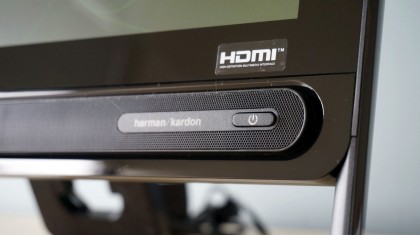
Performance
The Acer Aspire Z3 certainly isn't a powerhouse. As these benchmark scores show, the system is best used for non-intensive tasks that won't tax the processor or video:
- 3DMark: Ice Storm: 20,656; Cloud Gate: 1,789; Fire Strike: 185
- Cinebench Graphics: 5.97 FPS; CPU: 167 points
Nice to watch, but tough to touch
Despite some glaring shortcomings, Acer was spot-on in other ways with the Z3 display. It's big, bright, and usually responsive when browsing and launching apps from the Modern UI. Tasks like browsing a photo gallery, reading news feeds, and messing around with different touchscreen apps worked smoothly.
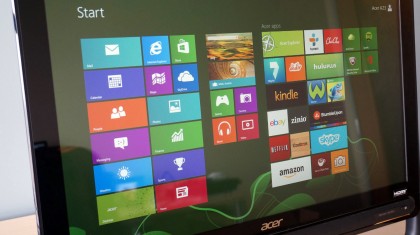
Things got a little sticky in the desktop UI, where buttons for closing and maximizing windows are tiny in comparison. There is also a significant delay when using the touchscreen to resize windows.
Sometimes the response time would take a dip and I had to swipe more than once, at varying speeds, to close and switch between applications. Even worse is that the glossy touchscreen is rather reflective and lights produce a noticeable glare.
The built-in 720p webcam can tilt up and down using a lever on the back. It is acceptable for video calls, but with a considerable amount of graininess. It's also terrible in low light, as the picture goes completely dark. Lastly, the DVD tray feels quite flimsy and fragile, so it's best to stick with digital formats.
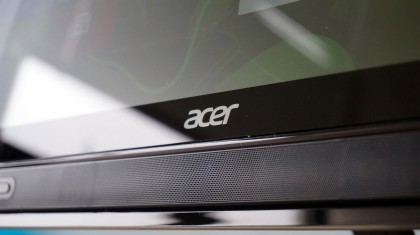
Sounds like a mess
Another bummer: although loud, the speakers pump out weak bass, which produces a lot of distortion. There is no physical volume control on the system, nor is there a remote control. Whatever you plug into the device's HDMI port must have its own independent volume settings. You can adjust the Windows sound using the task bar or the wireless keyboard, but neither have any control over the HDMI audio.
Speaking of which, the HDMI input can also be finicky. Switching to the input wasn't a problem at first, but then I started getting a black screen, and it would continually revert back to the main PC screen. Eventually, both the picture and sound were corrupted. The input appeared broken after a day of use, but miraculously started working again.
As for wireless connectivity, I tried numerous times to connect the Z3 with a punchier Bluetooth speaker, but was unsuccessful. It didn't matter if it was a Samsung AirTrack soundbar or a tiny Jawbone Mini Jambox – devices would pair, but wouldn't connect. This was due to a Bluetooth audio driver, or lack thereof, that might point to a Windows 8 issue, but Acer doesn't supply driver support for this problem. No matter the reason, the inability for something as simple as Bluetooth audio was disappointing.
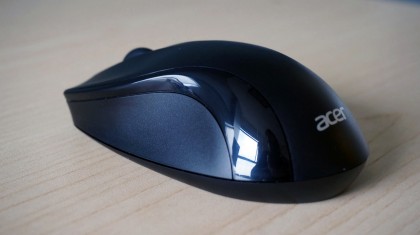
A widely weak machine
There's no shaking the feeling that the Aspire Z3 is designed to be an oversized tablet, and not a very good one at that. The system is hamstrung by its dated processor, with problems that manifest in different ways.
This PC did a good job at either performing one medium task, or a number of small tasks that aren't processor intensive. Performance took a severe hit when something as straightforward as a system update or app installation happened in the background. Streaming video stuttered, touch gestures wouldn't register, and nearly every application had fits and starts until the background process finished. Even typing and web browsing became annoyingly slow.
Making matters worse is how the only system light is the power button. There's no way to know if the hard drive is in heavy use. While it's bad enough that the Z3 is pretty much a mono-tasking computer, it gets worse when you further consider what it can actually run.
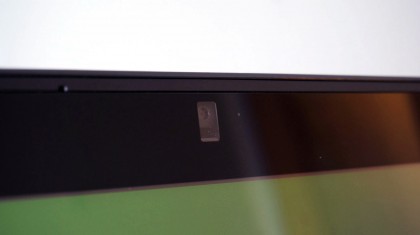
The computer comes pre-installed with the PointGrab Hand Gesture software, which lets you navigate and perform basic commands using the webcam. Think of it as the layman's Kinect controller. Granted, it's silly to wave your hands at a touchscreen that's within arm's reach, but it could come in handy in the kitchen for hands-free navigation. Unfortunately, this CPU struggles to power the app. After constant stutters and stalls, I was forced to leave it shut off. Just as well, since the software often confused me generally waving my hands for control gestures.
If you want to game on this PC, stick to those with relatively simple graphics and designed for Windows 8. Even then, finding what works well is largely guesswork. Halo: Spartan Assault played well, but Asphalt 8: Airborne displayed noticeable stuttering.

In testing Civilization V's touch controls, I had to tone down the graphics quite a bit. The game started off well, but slowed to a crawl as it progressed. It reached a point where there was a five second delay after pressing the "End Turn" button, even after I stopped using the touch controls and stuck with the included mouse.
